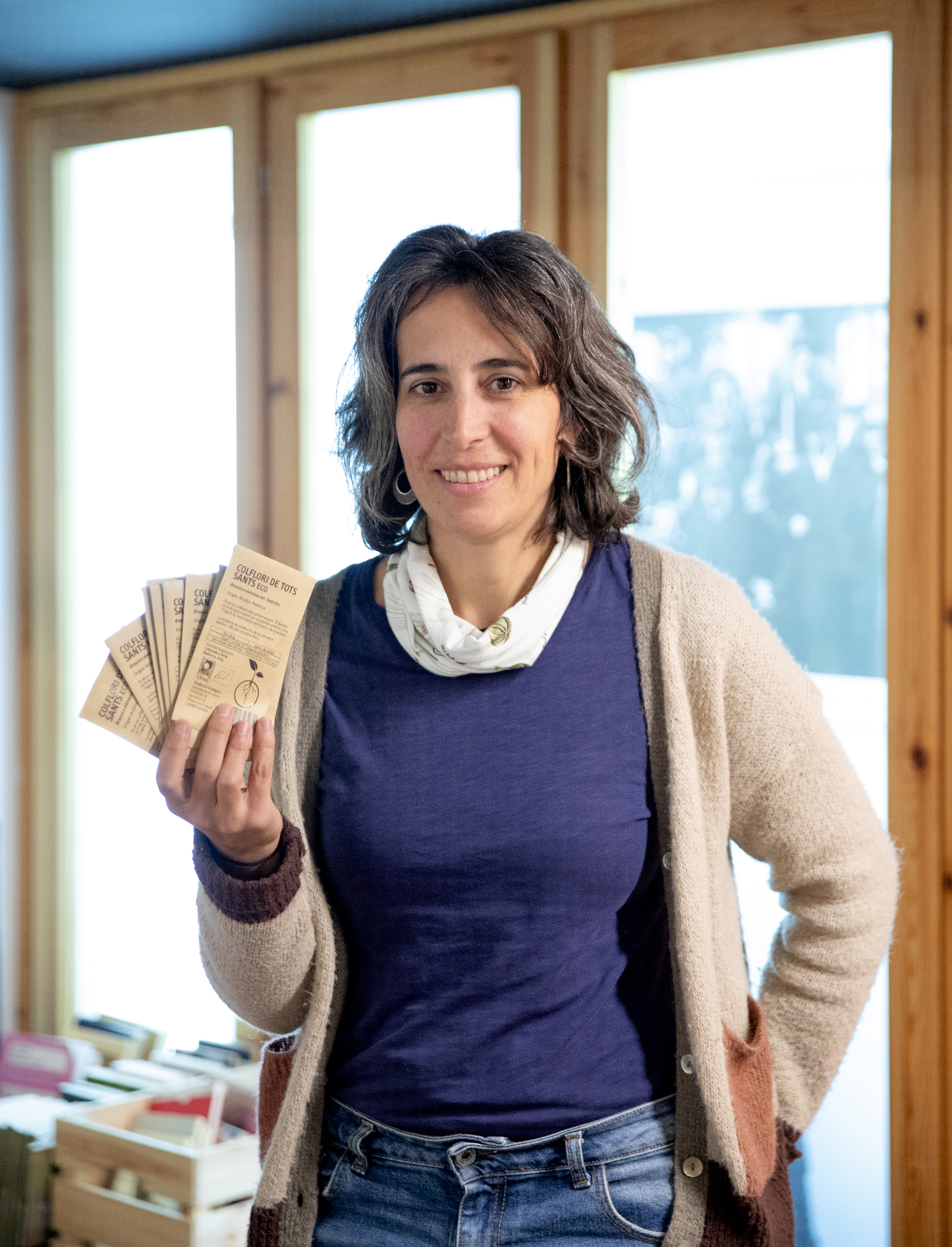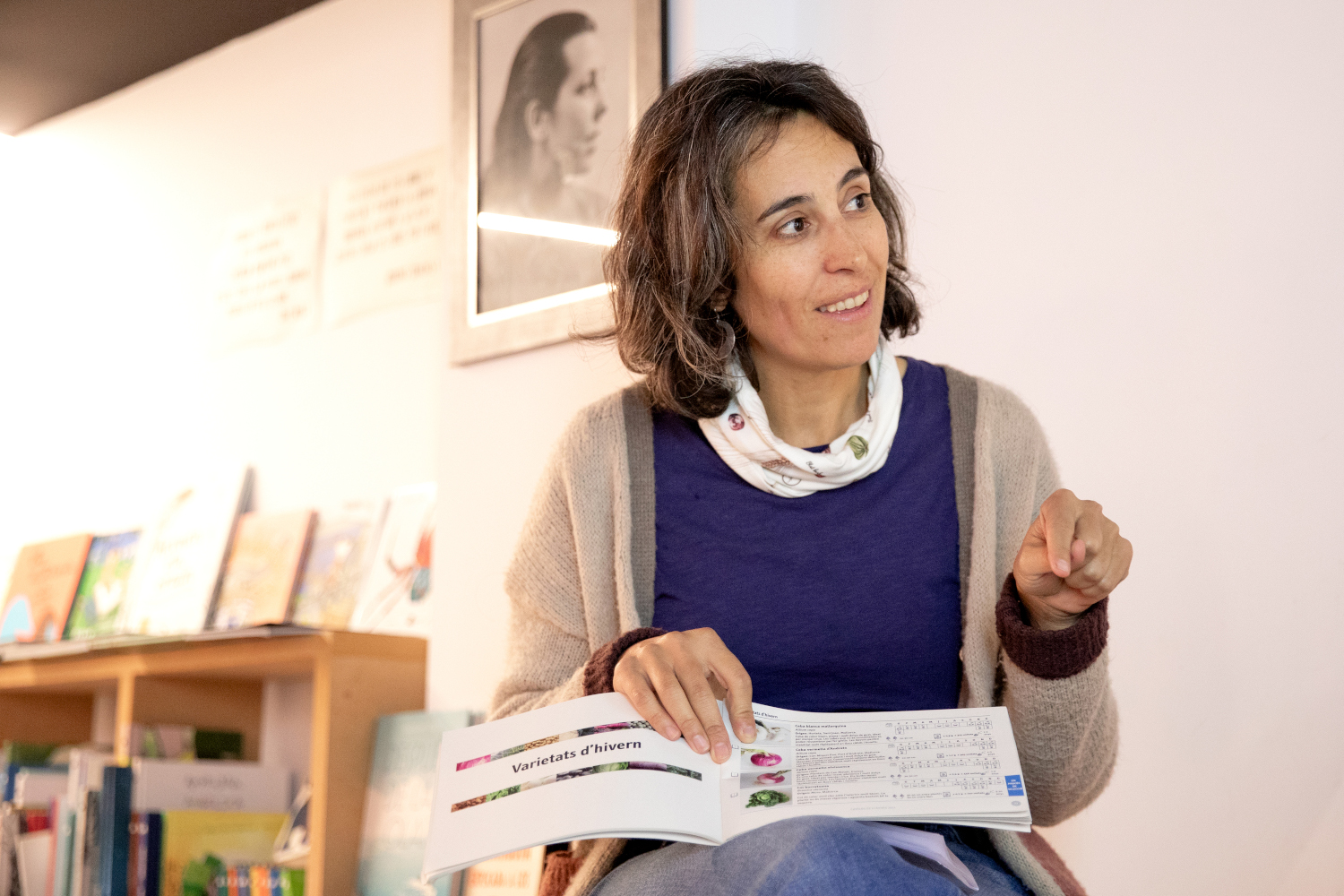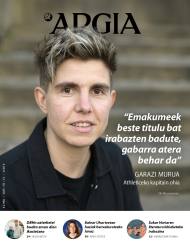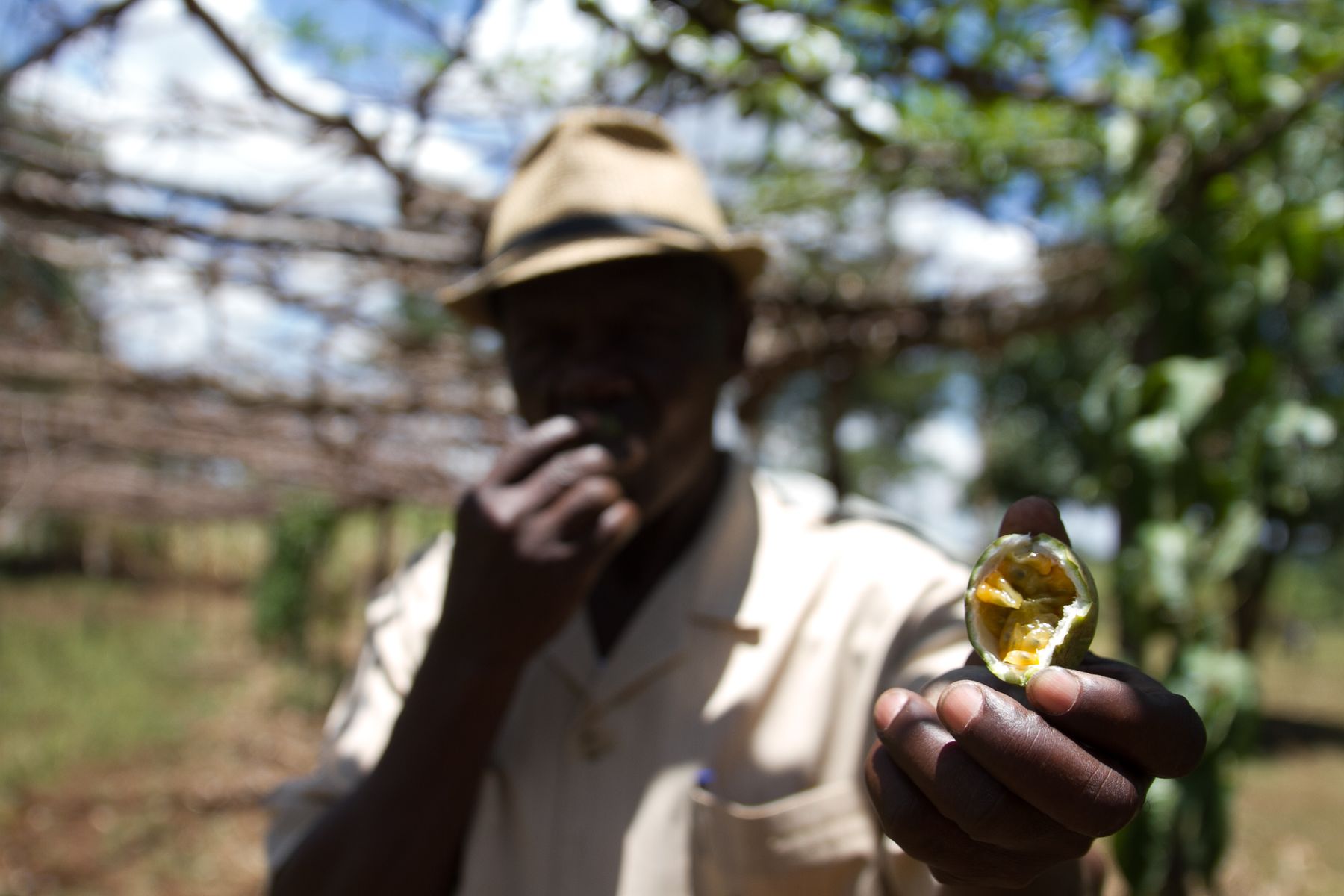"In each island of the Balearic Islands there are many varieties of plants that do not exist in the others"
- Many of them will join the Balearic Islands only with Oporleku, but on the island of Mallorca they have a living movement around agroecology and consumption: The Associació de Varietats Locals de Mallorca (association of local seed varieties) is an example of this. In early December, the association coordinator, Aina Socies Fiol, was at the Kaxilda library in Donostia, invited by the Haziera project of Fundación Cristina Enea. Without having to move from the Basque Country, it was a good opportunity to approach Mallorca, accompanied by a delicious bite prepared by the cooks of the Cantina.

Tourism has hit hard when it did. How has this influenced agriculture?
Tourism has had a great influence on all islands. Until the 1960s, most of the population lived in agriculture, but at that time there was a disruption of the generational shift when people moved to other sectors. My grandfather was a pastor and the whole family moved to Prat de Sant Jordi de Mallorca, to lands close to the airport, because it was a very suitable place for the garden. They were self-sufficient: they had cows, orchard… but at one point they offered work to their grandfather. He decided to keep grazing, because it was his life, but many others did not make that choice. And in the next generation, none of their children continued, because it was easier to work in tourism, services, etc.
There are few of you who are working around the seeds, but it seems that that world has something that completely catches you. If so, what has it been?
I think having something that's always been done in my house is important, because in the end I lived it very close, but I didn't value it until I immersed myself in this world. People around the world, people from the villages, people from the nurseries, were doing that work, but over the years, they were losing weight and many were leaving the activity. Those of my generation have turned their backs on the land in general. There it is, I can live in the countryside, but I have nothing to do with it. Now I live in the city, but I have a certain relationship, defending values and ways of doing related to the land. It's not about going back to the previous life, but it's about valuing some elements of the hour: saving your own seeds, feeding on what you already know. It seems easy, but today it has become strange.

How does the island's existence influence the seeds and their movements?
I have always thought it would be good to carry out a more in-depth investigation in all the Balearic islands, as we are mainly dedicated to Mallorca. It must be borne in mind that we are in the centre of the Mediterranean and that many cultures have gone through it, it is a pity that there are no footprints related to the movements of seeds. It is true that each island has its own idiosyncrasies, we are different and some crops dominate each island. The island of Menorca is very livestock, but it is mainly dedicated to agriculture with fruit trees. In Ibiza olive and almond trees predominate, while in Mallorca the variety is very large. There are many varieties that are not repeated; for example, in Mallorca we have a very local and fully integrated variety of peppers, pebre ros, which are eaten raw in salad. In others, they don't have that bell pepper. On the other hand, there are also many connections between us and varieties that we share. For example, in Ibiza we have recovered an onion, ceba vermella eivissenca, and we realize that the broom of Mallorca is exactly the same as the vermella d’Andratx. Andratx is one of the towns of Mallorca closest to Ibiza, so it is to be assumed that they have a connection. It's also happened to some varieties of melon.
The Mediterranean is one of the places where you are feeling the greatest influence of climate change. How do you live it and what role do local varieties play in this unstable context?
In recent years we have been living some very long, dry summers. Then, in autumn, it rains pouring, but then it returns to the drought, as in spring it barely rains. In this situation, some local varieties, such as vineyards and cereal, are adapting well because they are very resistant to droughts a.En the case of cereals, many companies are conducting experimental fields with local and hybrid varieties, and they have seen that the locals respond better to drought. However, the chickpea from Mallorca, which was widely sown in February and collected in early summer, is being very problematic. Farmers think of growing the vegetable garden, starting to work with the irrigation system or sowing it in autumn, otherwise it does not seem. The climate will become increasingly harsh and complex, and in that context, some local varieties will gain, but others will not.
Projects of Associació de Varietats Locals de Mallorca
It is 22 years since the creation of the association and, despite having several lines of work, it has a central axis: the reproduction project of local varieties. “We have a catalogue of varieties that we renew every year. We are the only project that produces organic seeds in the Balearic Islands, and we are also few in the Spanish state,” says Aina Socies. A total of 22 producers participate in the seed breeding project. “We sell the seed envelopes in 40 collaborating stores and the work of putting them in the envelopes is done by members of a mental health organization through our collaborative relationship with them.”
The association also provides training for professionals and school children, and research projects are being carried out as one of the richest arts.
Why is it important to preserve and reproduce local varieties?
Because they are the basis of food sovereignty and they give us the power to decide what we want to feed on. They allow us to decide ourselves, or the farmers in the area, what they want to sow in each place. This also seems easy, but today it is very difficult to put it into practice. One example: Most of the farmers in Mallorca, also those who work in the ecological field, bring the plant of hybrid varieties from the Iberian peninsula. The seed, the first element that is placed on the ground, seems to be at the last place in the chain of importance.
But if I choose the seed for years according to my criteria, it will be adapted to my needs and desires. What you bring from outside, we don't know where it is, nor what its behavior is, the commercial seed companies are the ones that decide what you sow and depend on. And on the other hand, the cultural aspect of the local varieties: intangible heritage, knowledge of seeds, management, recipes, ways of cooking...
Tomàtiga de ramellet case: when
the agro-industry acquires local varieties
If you ask me to quote a local variety from Mallorca, a variety that everyone knows, I will tell you about ramellet,” explains Socies. It is precisely on this variety that he has carried out his work at the end of the master's degree. It's a type of tomato to hang, which you can eat in roasted bread, from Banyalbufar, in the Tramontana mountains. “This town has lived for years from the production of this type of tomato, exporting boxes and boxes to Barcelona, placed in braids. It was women’s task to crawl and hang at the heights of the houses,” he says. In the village there is ample knowledge and culture linked to this type of tomatoes, and each house kept its seeds.
But some Israeli geneticists experimented with this type of tomato on several farms in Mallorca, and after years of research, they created a hybrid based on the local variety. Today is the day in which the hybrid tomato bearing this name is sold in large supermarkets and distribution chains, as if it were a local variety.
Since the association a great struggle has been made in this case, as it is prohibited by law to use the name of a local variety for a brand. In practice, however, things are different… “As if it were not enough, the great distributor Agromallorca has created a ‘guarantee seal’ called ‘Tomàtiga de ramellet de Mallorca’ for the hybrid variety, with the approval of the administration. They lie, with the support of counseling,” he says. In Mallorca, many local varieties have survived thanks to their close relationship with local cuisine, a member of the association is aware of this. But the other side of the coin is also there, and as a complaint, many varieties have been "perverted" in the name of gastronomy.
Haziak elkartrukatzeaz gain, Jakoba Errekondok solasaldia eskaini zuen martxoaren 10ean. Urte batzuk dira Baztanen Haziaren eguna egiten dena, azkeneko hiruetan gainera, herriz herri aldizkatuz. Horrela, aurtengoa Zigan egin dute, larunbatean; Zigako Herriaren eta Hazitik... [+]



















